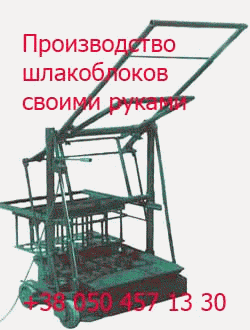Titanium dioxide is used universally, having almost completely replaced other white pigments. Consumption figures for 2003 are given in Table 2.9 [2.4]. Figures from different sources may differ significantly. The greatest annual increase in use will be for coloring of plastics (3.0%), followed by the coloring of paper. Geographically, the increase in consumption of TiO2 […]
Архивы рубрики ‘Industrial Inorganic Pigments’
Analysis
 30 сентября, 2015
30 сентября, 2015  Pokraskin
Pokraskin The crystal structure of the pigments is determined by X-ray analysis which is sensitive enough to determine 0.3-0.5% anatase in the presence of 99.7-99.5% rutile. For standards, see Table 1.1 (Titanium dioxide pigments; “Methods of analysis” and “Specification”). A qualitative test for TiO2 is a blue-violet coloration of beads of microcosmic salt (NaNH4HPO4 4H2O), or […]
Lightfastness and Weather Resistance
 30 сентября, 2015
30 сентября, 2015  Pokraskin
Pokraskin Weathering of paints and coatings containing TiO2 leads to pigment chalking [2.65]. If weathering occurs in the absence of oxygen, or in binders with low permeability to oxygen (e. g., in melamine-formaldehyde resins), no chalking is observed, but graying takes place, which decreases on exposure to air. Graying is greatly reduced in the absence of […]
Dispersion
 29 сентября, 2015
29 сентября, 2015  Pokraskin
Pokraskin Good disintegration and dispersion of the TiO2 pigments in the medium are necessary to obtain high gloss and low gloss haze. These requirements are satisfied by intensive grinding and by coating the pigment surface with organic compounds. The compounds used for this surface treatment depend on the field of application (see Section 2.1.З.4.). 2.1.5.4
Mass-Tone (or Color)
 29 сентября, 2015
29 сентября, 2015  Pokraskin
Pokraskin The whiteness (brightness and mass-tone/color) ofTiO2 pigments depends primarily on the crystalline modification, the purity, and the particle size of the TiO2 (see above). As the absorption band (385 nm) of anatase pigments is shifted into the UV region compared with rutile pigments they have less yellow undertone. Any transition elements present in the crystal […]
Scattering Power
 28 сентября, 2015
28 сентября, 2015  Pokraskin
Pokraskin The refractive indices of rutile and anatase are outstanding (n = 2.80 and 2.55, respectively). This is even higher than the refractive index of diamond (n = 2.42). Even after incorporation in a wide range of binders, the relative refraction coefficient (refraction index of pigment / refraction index of matrix) is typically between 1.5 and […]
Pigment Properties
 27 сентября, 2015
27 сентября, 2015  Pokraskin
Pokraskin The most important pigment properties of TiO2 pigments are: scattering power, hiding power (tinting strength), brightness, mass-tone (or color), gloss formation, gloss haze, dispersibility, lightfastness, and weather resistance. These properties are a function of chemical purity, lattice stabilization, particle size and size distribution, Tab. 2.8: Continued. Country Company Location Capacity, 10001 a 1 Chloride Sulfate […]
Economic Aspects
 27 сентября, 2015
27 сентября, 2015  Pokraskin
Pokraskin The burning ofTiCl4 with oxygen usually results in rutile pigments, whereas the calcination ofTiO2 hydrolyzates produces either anatase or rutile pigments, depending on the doping and lattice stabilization. Most of the pigments sold are coated with oxides or hydroxides of various elements. Different treatments necessarily depend on the field of application, and all major pigment […]
Waste Gas Problems
 27 сентября, 2015
27 сентября, 2015  Pokraskin
Pokraskin The gases produced in the calcination kiln are cooled in a heat exchanger, and entrained pigment is removed, washed, and recycled to the process. The SO2 and SO3 formed during calcination are then scrubbed from the gases to form dilute sulfuric acid which is recycled. 2.1.4
Waste Management Aqueous Waste
 26 сентября, 2015
26 сентября, 2015  Pokraskin
Pokraskin In the sulfate process, 2.4-3.5 t concentrated H2SO4 are used per tonne of TiO2 produced, depending on the raw material. During processing, some of this sulfuric acid is converted to sulfate, primarily iron(II) sulfate, the rest is obtained as free sulfuric acid (weak acid). Filtration of the hydrolyzate suspension can be carried out to give […]
 Опубликовано в рубрике
Опубликовано в рубрике 
